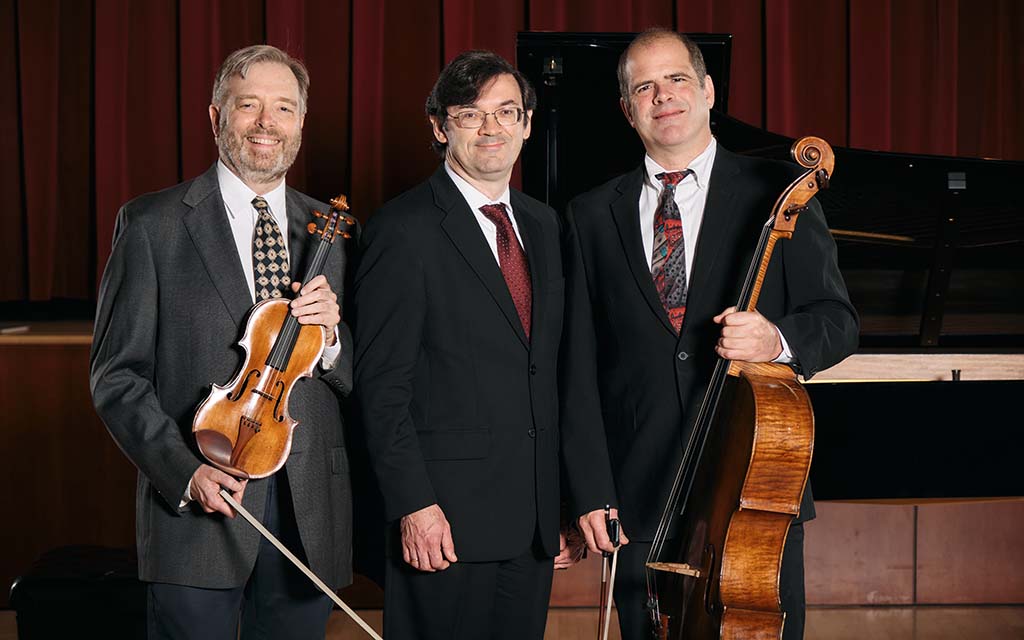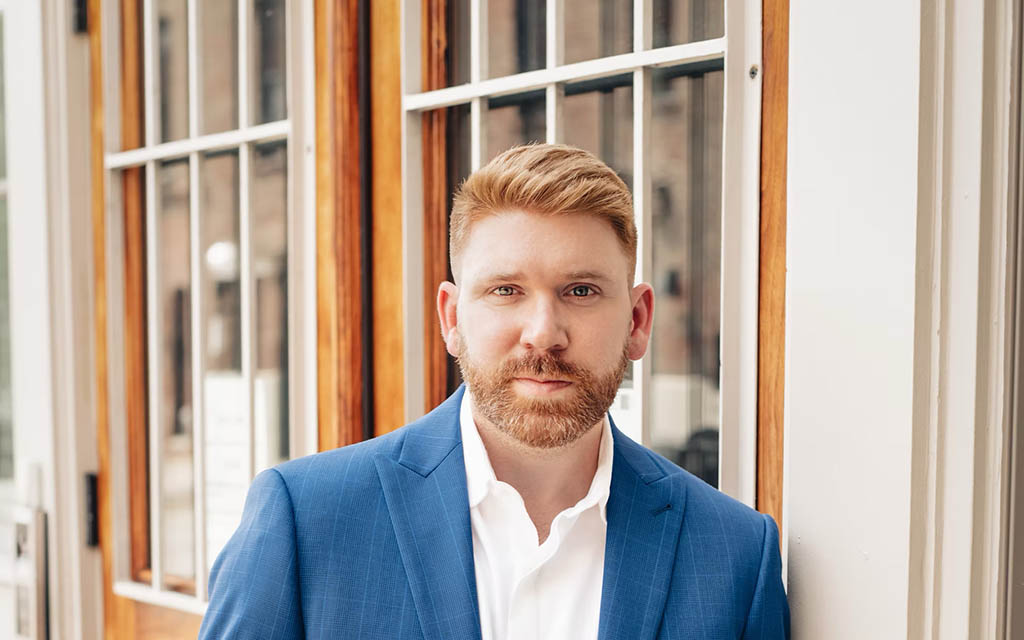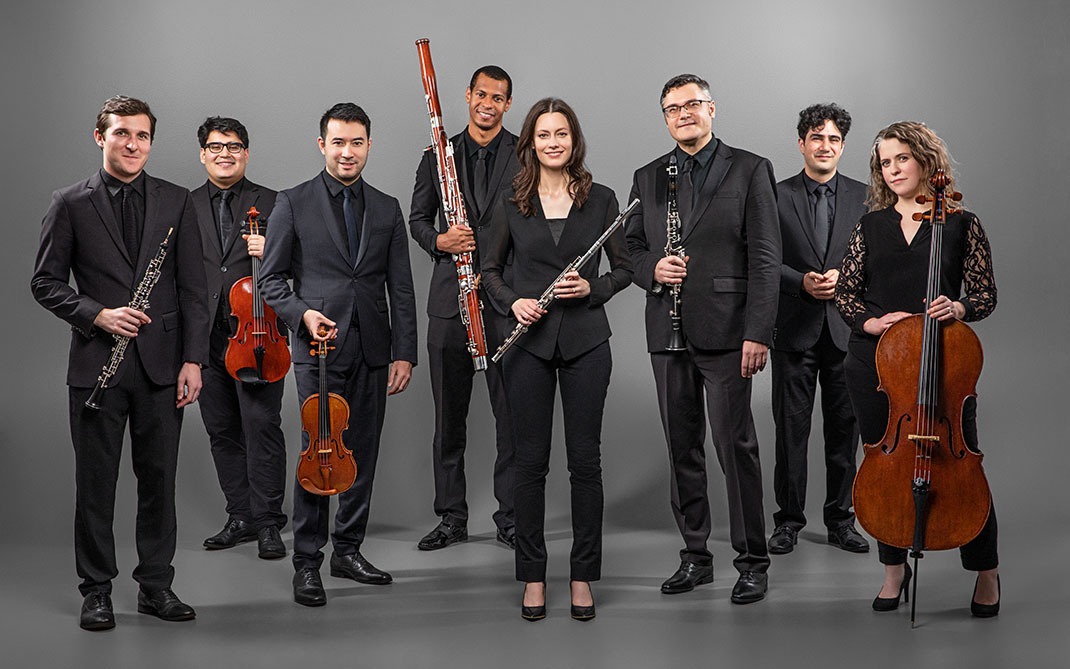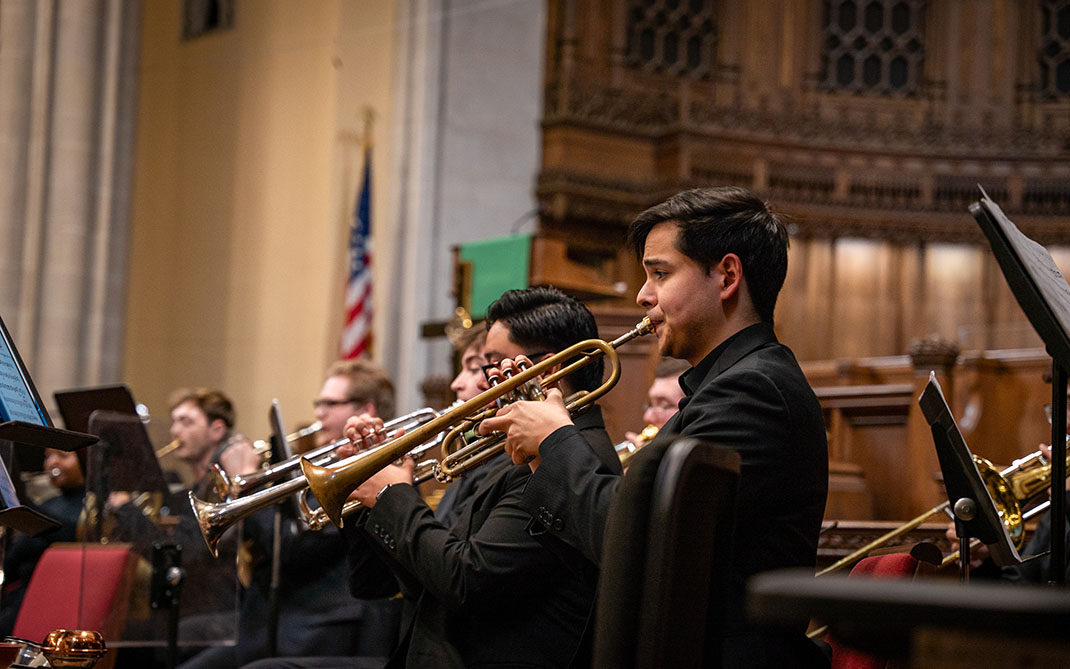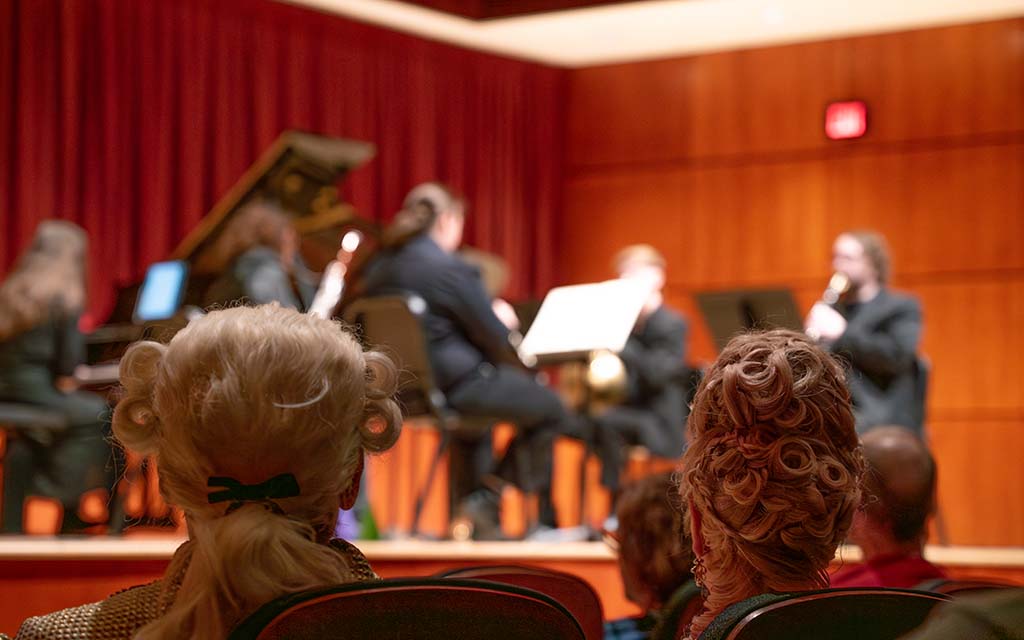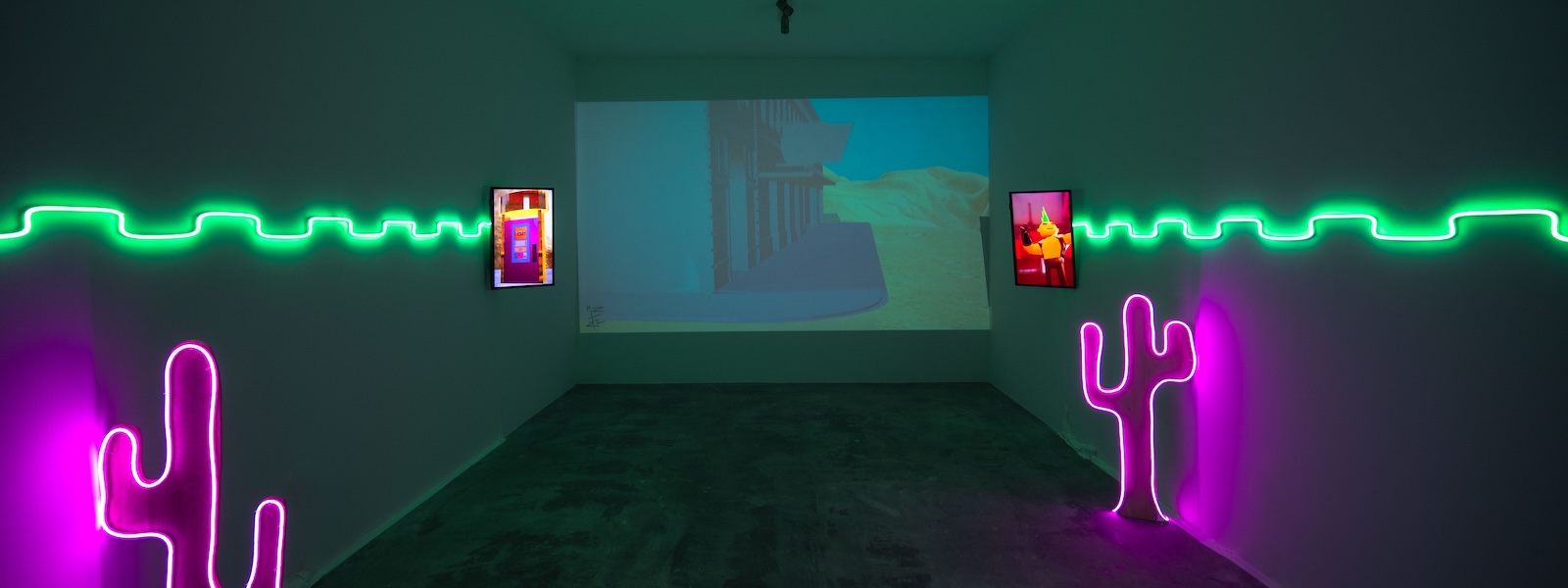Curator Coka Treviño Talks Big Medium, Huge Loss
Listen to the interview on Apple, Spotify, or your listening platform of choice. Captioned interviews are available on YouTube.
The views and opinions expressed by speakers and presenters in connection with Art Restart are their own, and not an endorsement by the Thomas S. Kenan Institute for the Arts and the UNC School of the Arts. This interview has been edited for length and clarity.
It’s no secret that arts non-profits across the country are struggling to survive, but few closures have hit their communities as hard as the recent shuttering of Big Medium in Austin, TX. For more than 20 years, Big Medium was one of the most influential visual-arts organizations in the city. It produced the beloved and sprawling Austin Studio Tour, presented exhibitions that championed historically marginalized artists and served as an essential convener for the city’s creative community. At the heart of its work for many years was curator and, more recently, artistic director Coka Treviño, whose passion for equity and for platforming emerging artists helped shape the organization’s inclusive mission.
In this conversation, Coka, who continues her own curatorial work via her company The Projecto, reflects on her tenure at Big Medium and the complex web of challenges that led to its sudden closure. From shifts in city grantmaking priorities to the skyrocketing cost of living that made staffing nearly impossible, the interview offers a candid window into just how difficult it has become for arts organizations — even in culturally rich, economically booming cities like Austin — to maintain operations.
Pier Carlo Talenti: In order to get a sense of the scope of Big Medium’s work as well as of your own work within the organization, I thought it’d be great to start with you describing a favorite moment or a favorite project during your years there.
Coka Treviño: Ah, so many things! This is a job that was kind of dreamy for a while. The amount of contact that I had with artists was just wonderful, but also just to be able to have curatorial work where I can and want to show the city artists or projects that happen, just doing good stuff and good for the community and just having the opportunity to show what I love to the city … which is to say, the gallery. I’m so proud of the gallery programming that we had at Big Medium. And all the programs.
I had some freedom, and that is wonderful, but I feel like being part of an artist’s career and having a show with them and being part of the process a little bit, even if it’s just witnessing or providing the platform, that really makes it so special and gives me a purpose. So, yeah, I’d say the gallery. It was a beautiful project to have.
Pier Carlo: Is there an artist in particular that you’re proud of for showcasing at the gallery?
Coka: So many. One of the latest that we had was Rodell Warner. He was the winner of the Tito’s Prize, a program that we had where a local artist would receive $15,000 unrestricted plus a show at Big Medium. It is wonderful, but it’s also kind of sad that that was only the second biggest award in Texas. From that, it jumps to, I believe, $100,000, so there’s a huge gap, but at least we were somewhere.
We met Rodell Warner through that. He’s amazing; his project was lovely; he’s an amazing human. He is working a lot on the AI platform, and — I don’t know if you’re familiar with him — it’s just such good work. He is from Trinidad. A lot of things happened in that part of the world during colonization, and he took it upon himself to imagine what the past would have been on the islands if that hadn’t happened, like what would be the migration, what would be the foods, the clothes, what would be —
Pier Carlo: You mean if colonization hadn’t occurred?
Coka: Yeah, exactly.
Pier Carlo: I see.
Coka: And part of it also is that a lot, if not all, of the records or the archival photos that exist are of white people only. If there are any Black people, they are just in service of white people. It obviously makes sense because the people that had cameras were the wealthy, and so it makes sense that there’s not as much registry from that. He really wanted to see what Black joy would mean, and he actually did it and created these wonderful images. Sometimes you can see that they’re AI, but sometimes you really can’t and you just see beautiful people with beautiful clothing or queer scenes, and it’s just fabulous. It’s so well done.
Pier Carlo: When you accepted the job of artistic director last year, what were you hoping to achieve that you couldn’t have done beforehand or that wasn’t available to you as curator?
Coka: I think in some part I had already been doing it, just without the title. The last few years of Big Medium were very hard financially and also in terms finding good staff and support in general. The last, I don’t know, at least two years, it was mostly the executive director, Shea Little, and myself working, so I was in the role, but it wasn’t official until he announced that he was leaving the organization.
What I dreamed at that time was to be able to take time and rethink the programs, rethink what our mission really was and if we were doing a good job, just to rethink our service, first of all outside of the White lens. As much as the founders are wonderful people, it was a white-centric organization from the beginning, so being able to start it intentionally with BIPOC equity was very important to me and also away from the founder. I don’t know, just taking it more as a project with a little bit more detachment.
Of course, that doesn’t even make sense, because I couldn’t be more attached to Big Medium in my soul [she laughs]. Yeah, I thought it would be a good way of separating and rethinking the organization in full with equity, inclusion and diversity at the forefront.
Pier Carlo: So — and unfortunately — you left in January, right?
Coka: Yeah.
Pier Carlo: What caused you to resign at the time?
Coka: We had someone new coming in, and after a lot of work, I —
Pier Carlo: This was the new managing director? The board created a new position, is that correct?
Coka: Yes. The dream was that I would be able to continue to do the programming side of things and there would be a managing director, much like in performing-arts organizations. We thought that was a great idea, and I still think that it would’ve been wonderful.
But long story short, it was kind of clear that the board and the new director had a different vision than what I had. It was clear to me that after all the time that had passed and after all that we had been fighting for, it was probably time for new eyes. If we weren’t seeing eye to eye, I thought maybe I was just different or maybe just the leadership that Shea brought aligned more with the line of work that I wanted to do versus what the board and the managing director had in mind.
I have to say I left in such a good place, just excited for this new era where the Studio Tour would be the main focus and where there were positive numbers for starters but also a positive place for the city. So I did not expect them to close, much less that quickly. Not at all. And it broke my heart.
Pier Carlo: Oh, that’s very surprising to me then, because they closed it just two months after you left, right?
Coka: Yeah, yeah. I was so hopeful that I was the problem [she laughs] or my spending time and efforts in programs that don’t make money, that are not specifically made to make money but to support the artists. I was like, “Yeah, maybe it is not the time for that.” And so I was actually hopeful that they had a different point of view that was going to sustain the organization a little bit longer, but it wasn’t the case.
Pier Carlo: When you say a different point of view in regard to money, what do you mean by that?
Coka: Oh, that we should spend more time on other programs that were more profitable.
Pier Carlo: What kind of program is more profitable?
Coka: The studio tour, the Austin Studio Tour.
Pier Carlo: Which is why you were certain they were going to keep that going?
Coka: Yes. And I have to say — and I know you know — that this is my opinion. I don’t own all the facts. This is just how I lived it, and I lived it very close to my heart, so a bunch of what I say might come as, yeah, very personal, which it is for me.
I understand the Studio Tour, and I understand the importance of it, and I love what it does, but at the same time, it is a very demanding program that wasn’t making money really. It was sustaining itself, but it wasn’t really profitable. To me, that’s what really made the other programs work. It was the combination of everything that made sense. I don’t know that with my curatorial practice, it really made sense to focus on the Studio Tour since it’s the least-curated program by design. People kept asking me to curate it, and I wouldn’t have it, because I feel like it’s more a community program than anyone.
Pier Carlo: Right. In a studio tour, the community curates the tour, right?
Coka: Exactly. And it is very important for me that people just go out and find every kind of art and that people discover their neighbors and that people support the kids starting out or the older people starting their stuff, so I really never wanted to curate the Studio Tour.
Pier Carlo: And how would the Studio Tour make money?
Coka: With different fees. Every year, we used to give about $15,000 to $20,000 in fellowships. We’d just fundraise so that people could get in for free if they have any restriction with payment or any need.
Pier Carlo: I see, because otherwise to go on the Studio Tour, you buy a ticket?
Coka: No, artists pay. The way that we think about it is it’s a co-marketing platform. We think about it as we’re all pitching in so that we can have an event for people to go out, so people don’t pay anything to go out on the tour.
Pier Carlo: I see. So it’s the artists who pay a nominal fee to be featured, and then you raise money for fellowships for artists who can’t afford it?
Coka: Exactly, yeah.
Pier Carlo: Very sad that that’s gone, because I’m sure it was a huge boon for the city.
Coka: Yeah.
Pier Carlo: And since we’re talking about the city and we’re talking about money … . My understanding is Big Medium was such a cornerstone of the visual-arts community in Austin, which is why its disappearance is so palpable.
Coka: Yeah.
Pier Carlo: I know Austin to be a very wealthy, vibrant city and a tech hub, so I am curious as to why any arts organization would have trouble raising money in that environment. But it also makes me think about the Bay Area, which is also a wealthy tech hub, and artistic institutions there have a heck of a time making money. I wonder if you can talk about what your understanding is of why it was so hard for Big Medium to have access to funds. I know that the city made changes in the way it dispersed grants, is that right?
Coka: Yeah.
Pier Carlo: Can you talk about that?
Coka: Of course.
Pier Carlo: Because I believe it impacted Big Medium quite a bit.
Coka: It did. It really did. I think like everything, it’s a very complex situation in the country that we’re living in and with the current ways but also the old ways. It is about money; everything’s about money. And it has the same root, but then it moves depending on the communities.
I’m going to address the city part of it first. It did affect us a lot. I think we were really supportive of the changes and of the staff implementing them. Unfortunately, the city is handled by humans, [laughing] and humans are flawed, and things happen and move in different ways that aren’t anticipated if you don’t do things intentionally.
I also applied personally. I do have my curatorial practice independently, and I applied for grants as well, and this last one, I didn’t get anything, even though I check every box. I went through the process, and it didn’t seem that it was thought out in regard to equity and real diversity. Yes, the boxes are there, and yes, you can check those boxes, but at the end of the day, the questions are not based in equity.
Pier Carlo: My understanding is that the intent was to support arts in marginalized communities.
Coka: Yes.
Pier Carlo: But the outcome was that longstanding institutions were hit the hardest.
Coka: Yes.
Pier Carlo: Including institutions that did serve those communities, is that right?
Coka: Exactly. Yeah, yeah, that was particularly painful for us because that’s what we were doing. We’ve been doing it for years now, prioritizing that, not because of grants but because we think that’s what’s right. That’s why we were very supportive of the programs. But if the program is not made intentionally and it’s not well-researched, it just turns out to be completely counterintuitive.
I think there was, I don’t know if it’s lip service or checking more boxes, but it was very unfortunate. And, yeah, I’m speaking about Big Medium but also about everyone else who couldn’t even fill out the grants. Because it was very grant-oriented. We know a lot of people, wonderful people, and some others that are not as wonderful [laughing], who have good grant writers, and they got money, and other people that deserved it didn’t. Having the same questions for everyone is not equitable. You have to have a deeper understanding and more thoughtfulness on how these processes work, because all of our structures are based in white supremacy. I’m going on a path that I don’t know if it’s what you and your audience go through, but in this case, it’s just part of the system.
Pier Carlo: I’m sure this often happens in other towns, in terms of artists being on one side and the people who disperse those civic monies being on the other. In this case, what do you think could have been done differently so that the goals of equity could have been achieved and so that artists’ needs could have been considered for real?
Coka: I think that there needs to be way more research and way more understanding of what the institutions do. There were a lot of people that were granted money that was for an event or for this little thing. They were giving money to individuals, which is great, but it’s also taking money away from other people that have more tenure. A lot of the complexity is that the city created panels with volunteers. Maybe they had some money, but people opted in to be part of the panels, and then they had some training, and from there they graded.
Pier Carlo: Oh, so anybody could apply to be on a selection panel, basically?
Coka: Exactly. That makes it that much more complex, because there are different interests and different people giving opinions and being very impactful without the knowledge or the understanding. If you don’t have a grant writer that knows how to go around certain things, it’s just not helpful. Intentionality and more research and bringing in someone that specializes in these kinds of programs would’ve been vital, but that also means more investment and more people complaining.
But I do truly believe in the process and being intentional about these things because this is about breaking a whole system or modifying a whole system, so it has to be done in such a good way, otherwise it happens like this one, where people lost a lot.
Pier Carlo: I’ll have to tell you, it’s surprising to me that Big Medium after 20 years of work didn’t have a grant writer.
Coka: We have help, but basically it was just the executive director and myself. Those were the two staff. Since the pandemic, we had a director of development for a little bit, but it was very short. And since the pandemic, with everyone moving into the city, the salaries jumped way higher, and we haven’t been able to really afford someone that has the expertise that we need. And we don’t have the money because we don’t have the development, I should say.
Pier Carlo: You can’t compete.
Coka: Exactly.
Pier Carlo: Well, that’s so interesting. That brings me to the second part of my question about raising money in a wealthy city, which you’d think would be easy. But you’ve just listed an example of what makes it difficult, which is that you’re competing for salaries you can’t afford.
Coka: Exactly. That and also … . I’ve been thinking about this for literally years, and I’ve had conversations with people that have been here for over 30 years, and in a weird way everyone agrees that this is just what it is, that it’s the same problems that Austin has had forever, which, yeah, it was very surprising to me.
I have a theory. Again, it’s very personal, so I don’t have the data to back it up, but when seeing cities like Houston or Dallas or San Antonio, those cities really treasure culture, and there are the same families supporting the arts and culture for generations. It doesn’t matter if it’s the Chicano experience or if it’s whatever. Every kind of culture is supported by the community, and I don’t see that here.
I feel like there’s probably a lot of people that just come, go to the university,
go drink a lot of beer and go to the football games or basketball or whatever and
then they leave. They had a good time, and that is the connection that people have
with Austin, but it’s not investing in the future or the community. South by Southwest
(SXSW), for example, is stopping its music programming, which was how it started.
We encounter the same issue: people coming, using and leaving.
It is a party town, and I don’t think that it’s fostering the relationships needed
to sustain the cultural community.
Pier Carlo: What could be changed so that those relationships could be fostered?
Coka: First of all, I think it has to do with the city. It has to have some changes to the allowances given to people building or Airbnb, all the stuff that gives preference to business than community. We’ve lost so many, many people in music and the arts because of gentrification that it is just heartbreaking. Also we are losing what made people want to move here, and that happens every day. And then we have people that move downtown because of the music but then file complaints about it being too loud. It happens all the time.
I believe that it has to do with allowing those crazy developments, not having good plans for the community that lives here and has made it work or creating some programs for cultural workers or people that have been here for years. I think the big change should come from the government or a crazy, solid community work that, like in many places, is what ends up saving everyone.
Pier Carlo: Do you have a sense of what the new way should be?
Coka: I don’t, but I know people are doing really good work. There are a few organizations that are really outstanding, like Future Front or the Museum of Human Achievement. They are doing things in their own way with their own different set of values. They’re organized, and they’re just providing for their communities. It’s a little bit more niche, but it’s still very, very just impactful for the city.
And there’s a new fair coming up, the Friends Fair. It’s five galleries getting together and just doing something or just talking to different people and doing a fair in tandem with Affordable Art Fair, which just started last year. So I see movement. I’m sure there’s artist movement — it’s just not clear to me — but I know there’s other organizations working on it.
Pier Carlo: How is all this change affecting your own career as a curator?
Coka: I am very, very grateful that I made that decision when I made it. I don’t know how well equipped I would’ve been for this, or I don’t know if I would’ve continued to work the number of hours and with the amount of pressure that was self-imposed. I’m glad I was able to separate before because maybe I would’ve been just fundraising myself like we did for a few years at the end. I started as a program coordinator, and at the end of the day with the artistic director I ended up learning about fundraising and doing it a lot, plus not having weekends for months at a time. That is not sustainable, and I think that’s where I would’ve ended.
It has been really, really important for my life, my mental health and my spirit, really, to pause and grieve and rest a lot. I feel like my body and my brain haven’t taken a real time off in a couple years without thinking every single day about Big Medium and how we’re doing and if we’re serving enough or if we’re doing enough. Thanks to this, I’m able to refocus on myself and what I want to do. I’m excited.
I still don’t have it solved just yet, but for the first time in years, I am able to sit and think about myself, like what is it that I want to do? It’s not about the city as much, it’s not about what will reflect the organization but what is it that I want to share with my life and with my practice? It has been really, really nice to rest and to take a step back and also to reassess how do I want to contribute to my community.
Because I don’t want to work that hard ever again, where I get lost in just work and serving others while neglecting myself. Unfortunately, for the people that make it work in the non-profit arts, it comes somewhat like that, where for a non-profit to work, someone has to be sacrificing a lot. Otherwise, it doesn’t really work, because no one has the money to pay decently or to give vacation. Maybe I’m generalizing or projecting, but I know of many non-profits that operate this way, and it’s not sustainable, and I don’t think it’s good when you put yourself at risk.
Pier Carlo: Well, let me ask you this. This is a what-if question. What if there were a benefactor that said, “Coka, I’m going to write you a check for seed money to start something new that lets you do what you want and work with artists in the community that you want to work with, but it’s just a seed money. In other words, it doesn’t come with an endowment. You have to keep it running.” So my question to you is what’s the community you’d like to work with and what would you set up, what would it look like and how would you ensure that it would survive?
Coka: I think at this moment I would say, “No, thank you, but I can give you a list of very deserving people.” [She laughs.]
May 07, 2025

